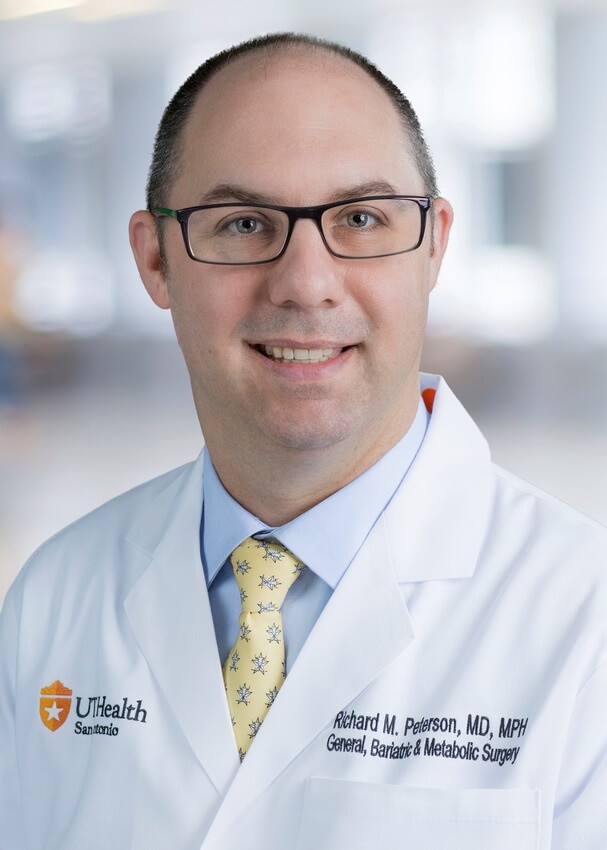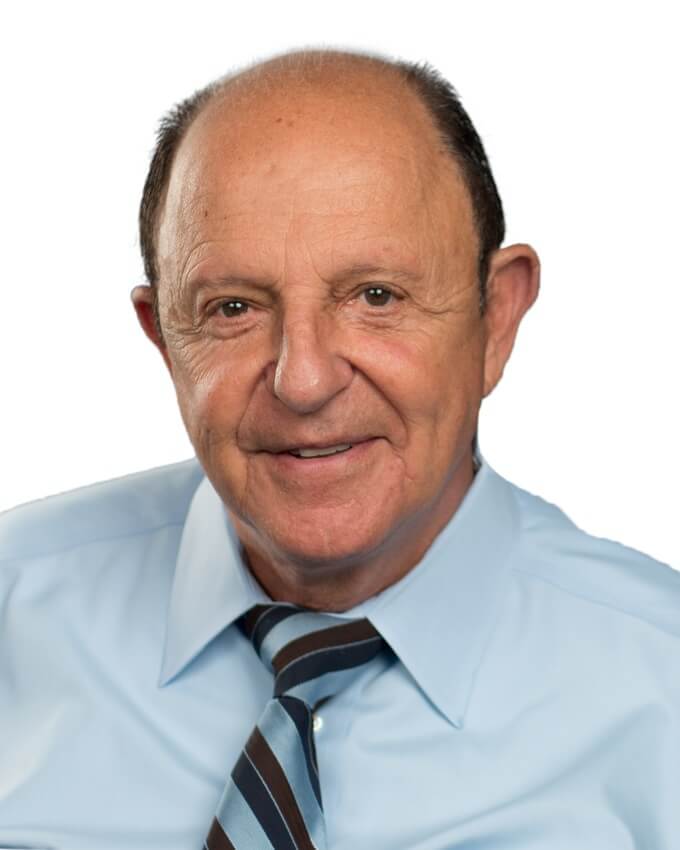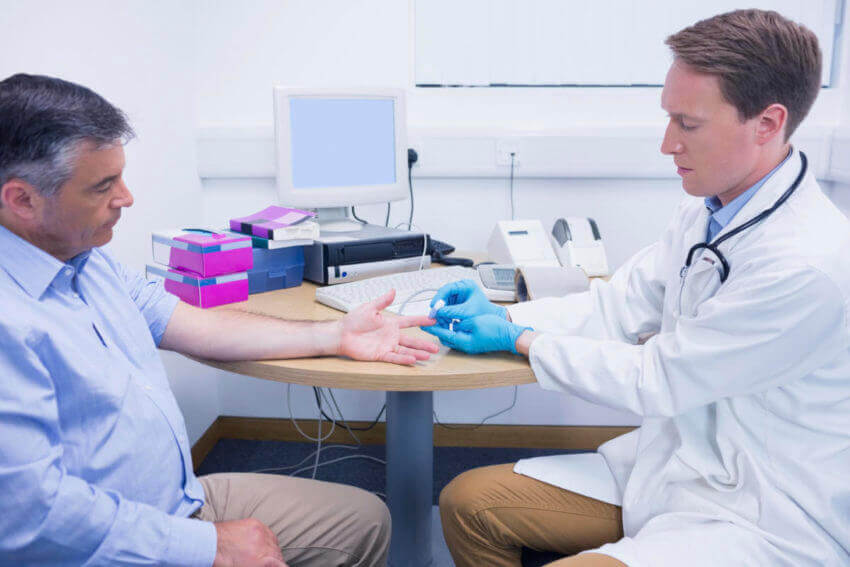First patient to receive fat extraction surgery has improved health
UT Health San Antonio, University Health and Texas Biomedical Research Institute are reporting promising results following a minimally invasive procedure that dissolved abdominal fat in two patients. The goal of the novel procedure is to improve the patients’ health and minimize or reverse the adverse health effects of their Type 2 diabetes.
Abdominal fat, the proverbial tire around the middle of so many Americans, is unhealthy. It is associated with diabetes, cardiovascular disease, fatty liver disease, insulin resistance, hypertension, poor lipid profile and more.
The mesenteric visceral lipectomy technique, or MVL, extracts fat from the mesentery, a sheet of tissue that is attached to the intestines. The surgeon makes a small abdominal incision and uses a patented, proprietary medical device to dissolve the glycoproteins (or glucose) that hold the fat together. The same device suctions out the fat without affecting the blood vessels or surrounding tissues.
“This is important because the fat in our abdomen contains numerous blood vessels,” Richard Peterson, MD, said. “This technique allows the fat to be removed surgically without significant bleeding. Once the fat is loose, it is suctioned out.”

Dr. Peterson is chief of metabolic and bariatric surgery at UT Health San Antonio and a bariatric surgeon practicing at University Hospital. He performed the first procedure of this kind in University Hospital in November 2019, launching a 10-person, first-in-human clinical trial of MVL. World-renowned endocrinologist Ralph DeFronzo, MD, chief of diabetes at UT Health San Antonio and deputy director of University Health’s Texas Diabetes Institute, is the trial’s principal investigator.
First MVL patients
A man in his mid-30s with diabetes was the first patient anywhere to receive the MVL procedure. The medical team at the Texas Diabetes Institute identified him as a good candidate.

“Because he was the first subject, we only removed 30% of the visceral fat,” Dr. DeFronzo said, explaining that the goal with future patients is the removal of as much as 90% of the fat. “Nonetheless, he had a modest improvement in insulin sensitivity. His glucose tolerance and HbA1c (hemoglobin A1c) did not change, but he required less diabetes medication.”
“People that young, suffering from diabetes for the rest of their lives, deserve a better chance,” Dr. Peterson said. “At the time of the first surgery, it came to me that he was our ‘Neil Armstrong,’ if you will. No one in the world had ever had this done, and he was leading the way for the rest of the world.”
Although the COVID-19 pandemic delayed this and other elective surgeries, Dr. Peterson and his team have now performed a second MVL procedure on a female patient at Foundation Surgical Hospital of San Antonio, and are observing the effects it will have on her health.
The MVL studies
Following surgery, the patients remain overnight in the hospital for observation. Follow-up studies are performed at the Texas Diabetes Institute. The U.S. Food and Drug Administration (FDA) granted an Investigational Device Exemption in authorizing the clinical trial.
The MVL technology was originally developed to remove eye cataracts, and was adapted for this new purpose by Mark Andrew, MD, an ophthalmologist in Pennsylvania and the inventor of the device. Dr. Andrew selected San Antonio collaborators to test the concept because of Dr. Peterson’s reputation in metabolic and bariatric weight loss surgery, and the expertise of Dr. DeFronzo.
The doctors then enlisted the Southwest National Primate Research Center at Texas Biomedical Research Institute (Texas Biomed) as the site of large-animal studies that the FDA required before authorizing the clinical trial in people.
Dr. Peterson, working with co-investigators Raul Bastarrachea, MD, and Patrice Frost, DVM, of Texas Biomed, proved the technique’s safety and efficacy in baboons, greatly benefiting the animals.
The baboon study was exciting. All four animals treated with MVL surgery survived without any complications, and all had remission of Type 2 diabetes.
“I do bariatric and metabolic surgery to treat Type 2 diabetes patients, and I was surprised to see such a dramatic effect on lowering the blood glucose,” Dr. Peterson said, referring to a drop in blood sugar levels. “That gave us enough momentum to push this forward to the FDA and design a clinical trial in people with Dr. DeFronzo and his team.”
The team hypothesizes that by removing the visceral fat, diabetes will improve, and the inflammation produced by the abdominal fat will be reduced, which will slow down arterial disease.
“Fat releases hormones and other substances that cause damage to the liver, the arterial system and beta cells that produce insulin,” Dr. DeFronzo said. “When people get fat, they get fat everywhere in their body, but the fat that is really dangerous is the fat that is within the abdomen.”
The MVL surgery is for obese patients whose body mass index, BMI, is between 30 and 40.
To ask about study eligibility, call the Texas Diabetes Institute’s research line at 210-358-7200 and ask for Mary Samano.


